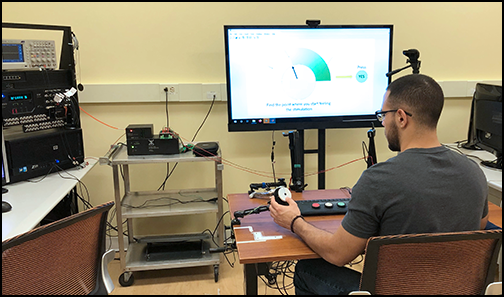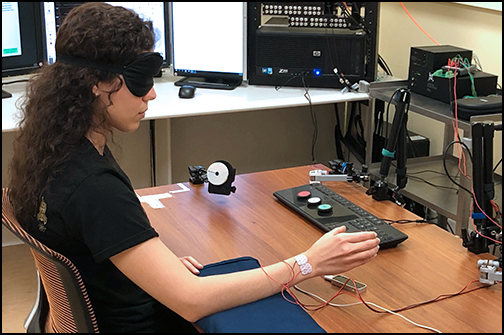Customer Spotlight: Drs. Ranu Jung & Andres E. Pena
August 10, 2021
Dr Ranu Jung and postdoctoral fellow Dr Andres E Pena are with the Adaptive Neural Systems (ANS) Lab at Florida International University (FIU). The ANS Lab focuses on developing and utilizing new scientific knowledge and engineering technology to address the complex physiological, medical, and societal problems presented by neurological disability.
Ranu Jung is Professor, Head of Department, and holder of the Wallace H Coulter Eminent Scholar endowed Chair in Biomedical Engineering (BME) at FIU. Jung is at the cutting edge between engineering and neuroscience, developing devices that lead to scientific advances with clear pathways to clinical application. Jung received her PhD and Master’s in BME from Case Western and her Bachelors with Distinction in Electronics & Communication Engineering from National Institute of Technology, India.
Andres E. Pena is an electrical and biomedical research engineer who completed his doctoral work at the ANS Lab in the spring of 2020. Andres has been actively engaged in the design and development of neurotechnology and has made major contributions to the field of prosthetics and neural interfaces during his undergraduate and graduate career.
| Drs. Jung and Pena’s recent publications (see TDT’s summary) demonstrate a novel stimulation protocol called CHIPS (channel-hopping interleaved pulse scheduling) that addresses pain induced during surface stimulation of nerve fibers. The technology may lead to a wearable system for tactile feedback, in addition to other novel applications. Recently, we met with them to find out more about this fascinating endeavor. |
How did you come up with the concept of CHIPS (channel-hopping interleaved pulse scheduling)?
Jung: The project came out of our research to develop algorithms for an implanted stimulator. We were looking for ways to stimulate nerves for tactile feedback. We work with patients with acquired limb loss and we wanted a noninvasive system to test the models before incorporating them into an implantable device. Andres, who was working on the experimental side of the stimulator, also needed a computational part to his project. It is my philosophy that all students who do experimental projects, that do not always go as planned, have a computational component.
What drew you to the idea of CHIPS?
Pena: I wanted to replicate the stimulation properties of implanted electrodes with surface stimulation using small diameter electrodes to target the nerve bundles. The increased charge on the electrode activates skin receptors that, depending on the charge level, can become painful. Patients only tolerate the stimulation for short periods. How to develop a stimulation protocol that did not activate the skin receptor was the driving question.

CHIPS came out of my review of literature on non-invasive stimulation techniques, including focused ultrasound. My models demonstrated that splitting the stimulation between electrodes (poles) and adding in delays to account for the capacitive properties of the tissue generated the same response as a single electrode with twice the charge. And our experiments validated the method. We have focused stimulation with minimum or no discomfort to the subject.
What do you think are the limits to CHIPS?
Pena: Other than the limitation on how many electrodes we could fit in a given area of skin, I am sure there’s a limit to how much we can divide and interleave the stimulation pulses. Our current models could be enhanced to find out where CHIPS begins to break down.
What do you see as the primary uses of this technology and what are its limitations?
 Jung/Pena: There are tons of applications for this type of technology – we have started to brainstorm on what applications are the best fit. You can imagine their uses, many of them are for short term stimulation consumer products. Imagine a dense array of electrodes with scheduled pulses to different channels of nerves for focused tactile sensation. With wearables, you do not have to worry about surgery and electrodes. But there are limitations with wearables.
Jung/Pena: There are tons of applications for this type of technology – we have started to brainstorm on what applications are the best fit. You can imagine their uses, many of them are for short term stimulation consumer products. Imagine a dense array of electrodes with scheduled pulses to different channels of nerves for focused tactile sensation. With wearables, you do not have to worry about surgery and electrodes. But there are limitations with wearables.
Jung/Pena: With wearables, you worry about patients maintaining the external devices, e.g. battery pack, and the accumulation of debris that degrades the signal. With implantables, the configuration and placement are set, and you don’t have to worry about placement of electrodes. You also need to think about what insurance reimburses. Implantables are more expensive, but if they are more effective or proven than they may be more conducive to reimbursement by insurance companies than wearables.
How has TDT helped you with your research?
Pena: I gave some work to TDT’s software engineers when I asked them to do a major change in the configuration of their controls. Myles [from TDT’s support team] enlisted the help of your engineers. I do software development and unit tests, and I understand that making changes requires that you make sure that it works constantly and that the changes do not break anything else.
|
This technology was also recently featured on the PBS show “Human: The World Within” – episode: “React” (see preview). Jung and Pena use TDT’s electrical stimulation system in their research. |
[ back to top ]
Tags: customer spotlight, electrical stimulation
